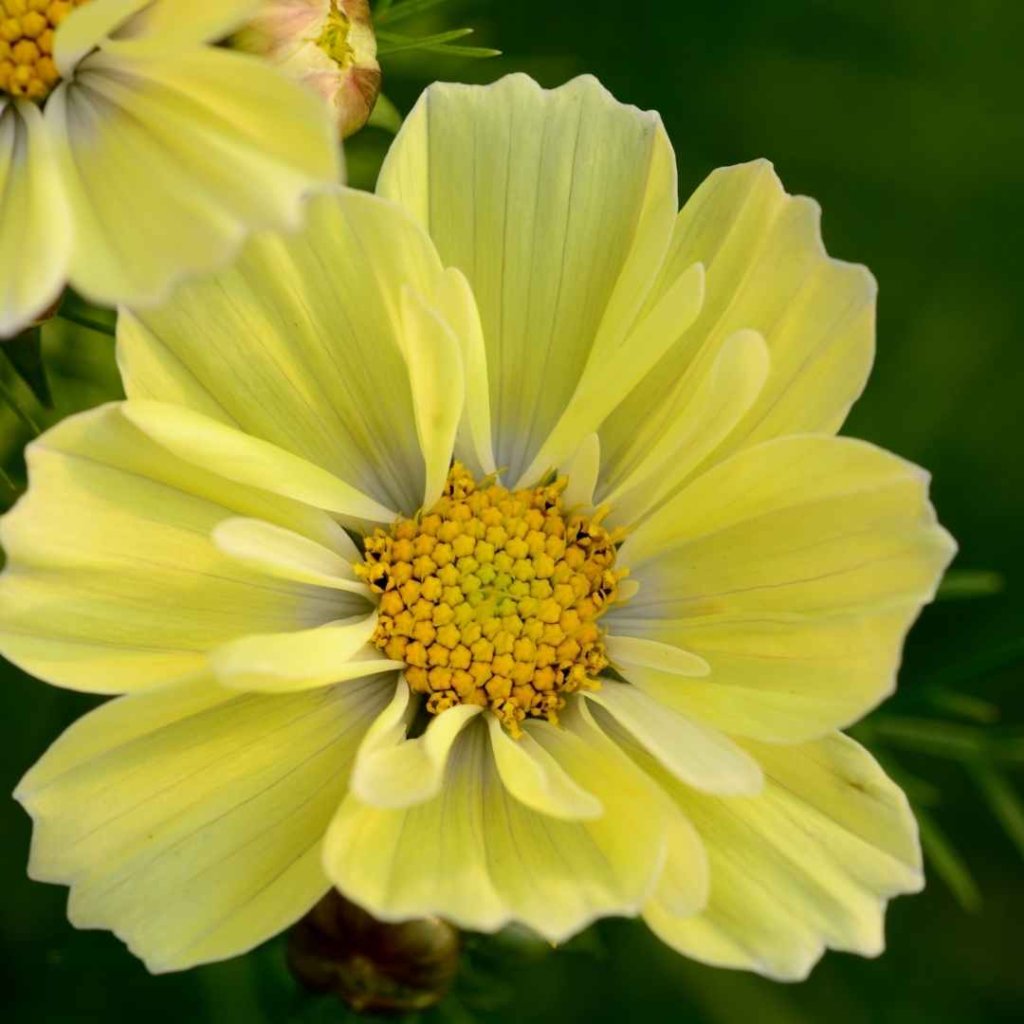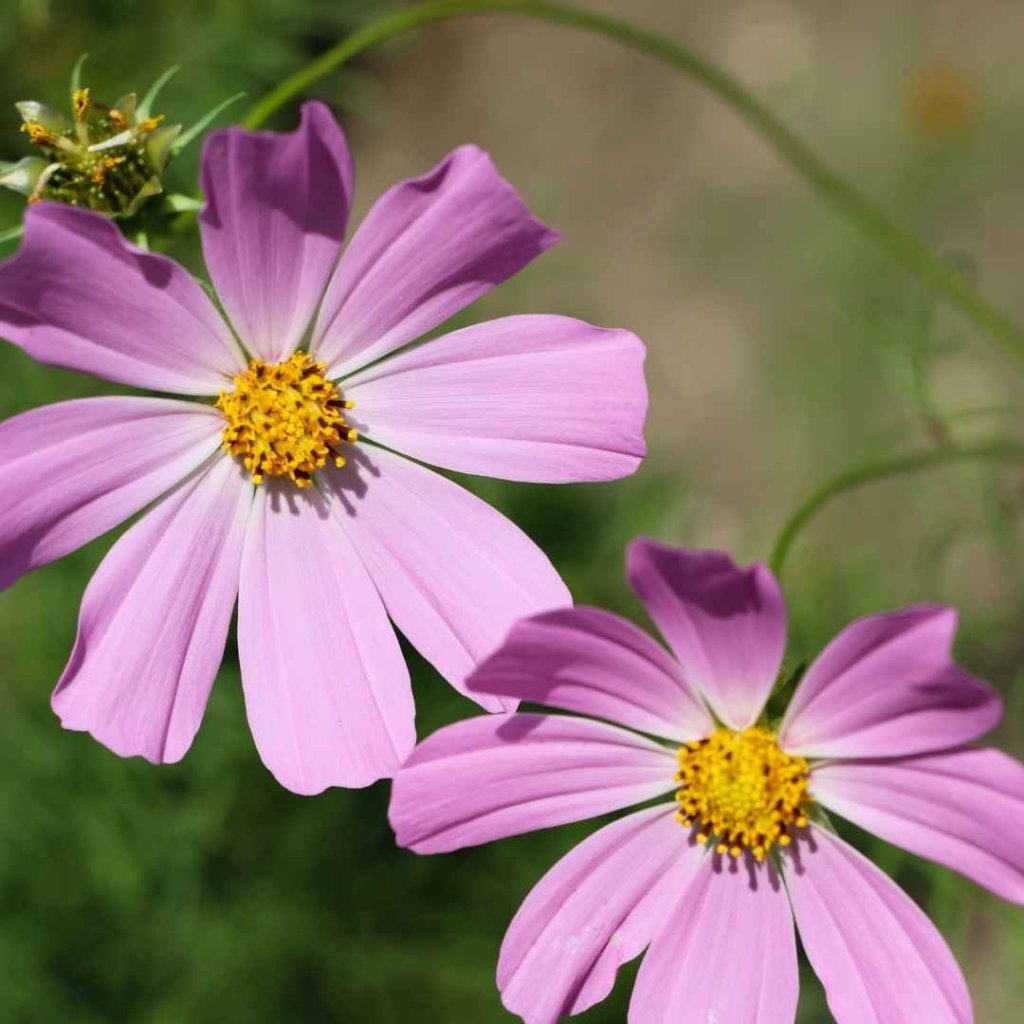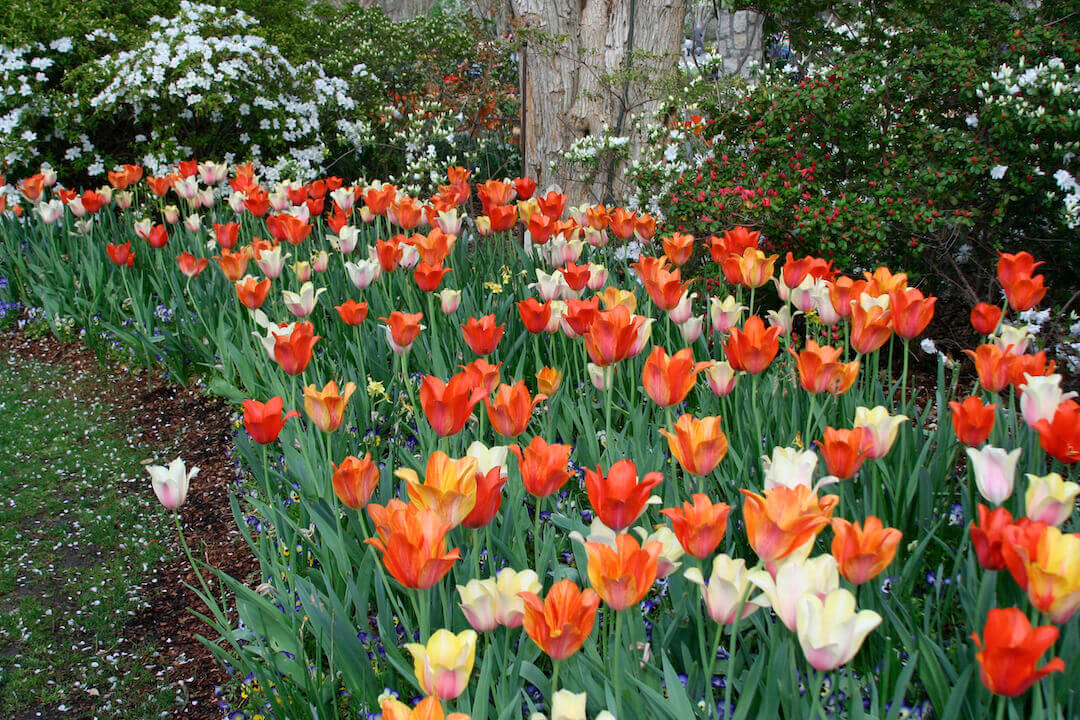
Cosmos are quintessential cottage garden flowers that thrive in our hot North Texas summers. Here is a quick guide to growing cosmos in the Dallas/Fort Worth area.
What are cosmos?
Cosmos are versatile annual flowers that can be grown for cutting or as a bedding plant. They also make good flowers for pressing.
Growing between three and six feet tall, cosmos are feathery plants that occasionally benefit from staking.
Cosmos bipinnatus is the species most commonly available at garden centers and from seed companies. Bipinnatus colors are typically white, light pink, or dark pink. Cosmos sulphureus grows taller than bipinnatus and boasts yellow and orange flowers. Dwarf varieties of both species are available.

When to plant cosmos in North Texas
Cosmos can be direct-seeded in the garden in early spring once all threat of frost has passed (mid-March here in North Texas). But you can also start seed indoors in late January or early February and set out as tranplants. This gives your plants a head start. (To ensure a continuous bloom throughout the growing season, see “Succession Planting” below.)
Transplants are also available for purchase at local garden centers in the early spring during the optimal planting window.
It generally takes 8-12 weeks from seed to first bloom.

How to grow cosmos
Plant cosmos in a location that receives full sun. They prefer well-draining soil, so if you have compacted clay, amend soil with compost and expanded shale prior to planting.
Be careful not to provide soil that is too rich, however, as cosmos thrive on neglect and do not tolerate excessive water or
To prolong blooming, remove spent flowers throughout the growing season. (This is known as deadheading the plant.) Some gardeners, however, will wait until their spring-planted cosmos have an abundance of dried seed heads and then cut the plants back to 12 to 18 inches high and sprinkle the dry seed around the plants. The pruned plants will be back in bloom in a month, and the sprinkled seed will germinate in the hot soil, expanding the density of the original planting.

Cosmos Not Blooming? It’s A Timing Issue
Interestingly, cosmos are day length dependent. This means that they bloom in response to the number of hours of daylight. Because cosmos are short-day plants, they perform best (and bloom the most) when day length is 14 hours or less.
This may explain why the cosmos you planted in April or May are not blooming. Here in North Texas, our day length exceeds 14 hours between late May and late July.
There is a way around this, however. The trick is to time your cosmos plantings so that your plants are mature by the end of May. This is because mature cosmos plants will bloom regardless of day length. Fascinating, right?
Cosmos Planting Schedule for Continuous Summer Bloom
There are two ways to ensure that your garden is full of cosmos blooms all summer: proper timing of your plantings and succession planting.
As mentioned earlier, you can start cosmos seeds indoors anytime between late January and the first of April. Cosmos seeds can be planted directly in the garden as soon as there is no chance of frost (anytime after March 12). Because cosmos need warm soil temperatures to germinate well, however, it’s a good idea to wait until late March or early April to direct-sow for best results.
First Week of April Is the Cut-Off for Summer
In order to have mature plants before day length reaches 14 hours, the last sowing of cosmos (indoors or outdoors) must take place within the first week of April.
If you plant cosmos by seed after the first week of April, you will likely have to wait until fall for blooms. Though frustrating, this isn’t a bad thing because cosmos blooms in the fall here in North Texas are usually even bigger and prettier than spring blooms.
Succession Planting
The best way to maintain a steady supply of cosmos
To succession plant cosmos, start them by seed every two weeks to four weeks between the end of January and the end of July. (Start indoors between January and April and again in July. All other months you can direct-sow. Personally, I like to start all cosmos seeds indoors for best results.) For info on starting seeds indoors, go here.
Fall Plantings
For beautiful cosmos blooms until frost, start cosmos seeds indoors in July and transplant outdoors in August or September.
Sudden Decline of Cosmos Plants
Sometimes, cosmos planted early in the year can experience a rapid decline in June after putting on good blooms in the spring. A sudden decline in your cosmos plants is typically caused by diseases that affect cosmos like powdery mildew, bacterial wilt, or root and stem rot.
If the spring season is particularly raining here in North Texas, your cosmos might not make it through the summer. This is why sowing cosmos multiple times throughout the year is important.
Cosmo varieties
Here are some popular varieties of cosmos that showcase the wide variety of shapes and colors. Click through for sources.
Summary
When it comes to growing cosmos, less is more. Be stingy with water, and don’t add any extra
If you are growing cosmos to make bouquets, grow at least three or four plants.

- New Plant I’m Testing: Kitchen Minis™ Bonsai Basil - April 24, 2024
- Resilient Perennials I’m Adding to My New Landscape - February 28, 2024
- 5 Ways to Enjoy Beautiful Fall Weather in DFW - October 18, 2023







